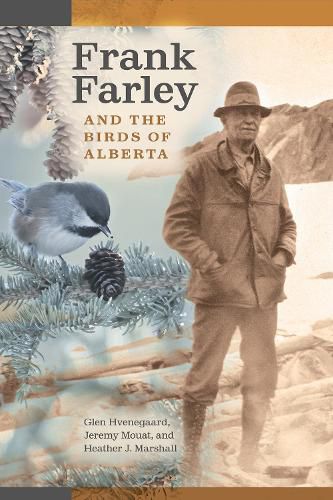Readings Newsletter
Become a Readings Member to make your shopping experience even easier.
Sign in or sign up for free!
You’re not far away from qualifying for FREE standard shipping within Australia
You’ve qualified for FREE standard shipping within Australia
The cart is loading…






This biography explores the fascinating trajectory of amateur naturalist Frank Farley (1870-1949), who in the first half of the twentieth century made significant contributions to the fields of ornithology and environmental conservation. An enthusiastic booster for rural development in western Canada, and Camrose, Alberta, in particular, Farley was also a passionate naturalist at a time when few others held such views. He supported and managed newly designated migratory bird sanctuaries, networked with expert ornithologists across the continent, mentored young people (including famous Canadian writer and grand-nephew Farley Mowat), and published widely to scientific and popular audiences. The book's description of Farley's career shows how a single individual can make substantive contributions to wildlife conservation while acknowledging tensions between amateur and professional ornithologists. The wide range of activities in which Farley engaged shows the complexities of rural life in Alberta and also reveals that concern over environmental change is not new. Frank Farley and the Birds of Alberta adds a stimulating new layer to a complex western Canadian past, and is an invaluable resource for scholars and readers versed in Canadian environmental history, climate change, and ecological activism.
$9.00 standard shipping within Australia
FREE standard shipping within Australia for orders over $100.00
Express & International shipping calculated at checkout
This biography explores the fascinating trajectory of amateur naturalist Frank Farley (1870-1949), who in the first half of the twentieth century made significant contributions to the fields of ornithology and environmental conservation. An enthusiastic booster for rural development in western Canada, and Camrose, Alberta, in particular, Farley was also a passionate naturalist at a time when few others held such views. He supported and managed newly designated migratory bird sanctuaries, networked with expert ornithologists across the continent, mentored young people (including famous Canadian writer and grand-nephew Farley Mowat), and published widely to scientific and popular audiences. The book's description of Farley's career shows how a single individual can make substantive contributions to wildlife conservation while acknowledging tensions between amateur and professional ornithologists. The wide range of activities in which Farley engaged shows the complexities of rural life in Alberta and also reveals that concern over environmental change is not new. Frank Farley and the Birds of Alberta adds a stimulating new layer to a complex western Canadian past, and is an invaluable resource for scholars and readers versed in Canadian environmental history, climate change, and ecological activism.